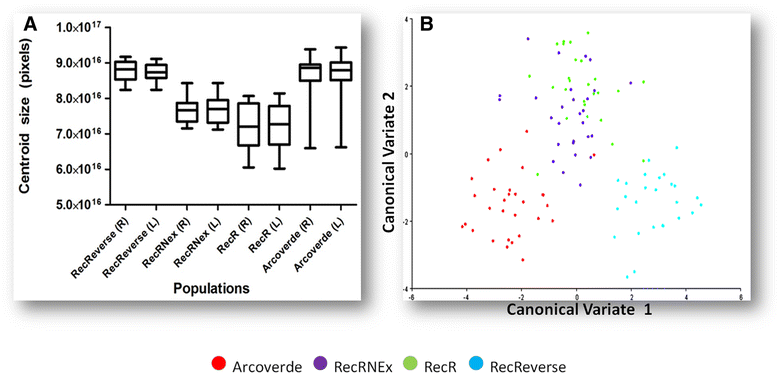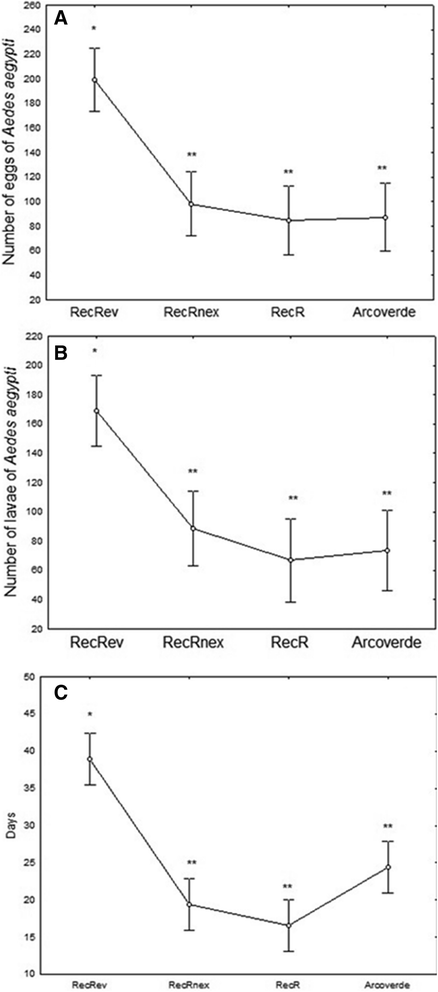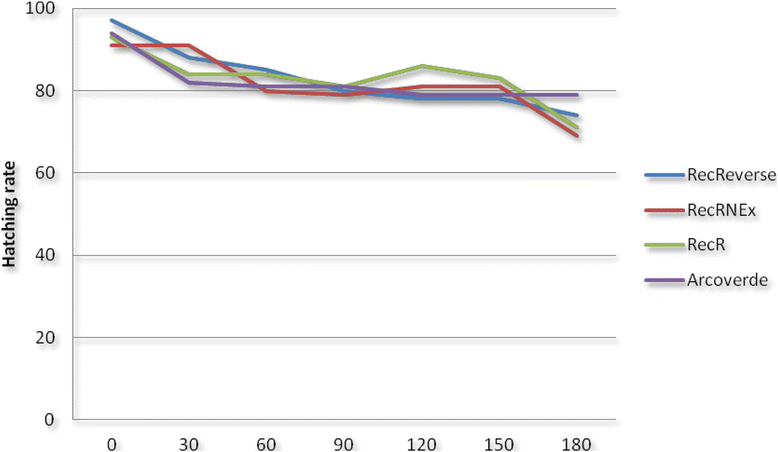Fitness cost in field and laboratory Aedes aegypti populations associated with resistance to the insecticide temephos
- PMID: 26715037
- PMCID: PMC4696322
- DOI: 10.1186/s13071-015-1276-5
Fitness cost in field and laboratory Aedes aegypti populations associated with resistance to the insecticide temephos
Abstract
Background: The continued use of chemical insecticides in the context of the National Program of Dengue Control in Brazil has generated a high selective pressure on the natural populations of Aedes aegypti, leading to their resistance to these compounds in the field. Fitness costs have been described as adaptive consequences of resistance. This study evaluated the biological and reproductive performance of A. aegypti strains and a field population resistant to temephos, the main larvicide used for controlling mosquitoes.
Methods: Comparative tests were performed with a resistant field population from the municipality of Arcoverde, Pernambuco State, Brazil, with a high rate of temephos resistance (RR = 226.6) and three isogenetic laboratory strains from the same origin (Araripina municipality, Pernambuco): RecR (RR = 283.6); RecRNEx (RR = 250.5), a strain under a process of resistance reversion; and RecRev (RR = 2.32), a reversed susceptible strain used as an experimental control.
Results: Our study revealed that the absence of selective pressure imposed by exposure to temephos, for five consecutive generations, led to a discrete reduction of the resistance ratio and the response of the detoxifying enzymes. Most of the 19 biological parameters were impaired in the resistant strains and field population. The analysis of the fertility life table confirmed the presence of reproductive disadvantages for the resistant individuals. Similarly, the longevity, body size, and total energetic resources were also lower for the resistant females, except for the last two parameters in the field females (Arcoverde). In contrast, the sex ratio and embryonic viability suffered no interference in all strains or population evaluated, regardless of their status of resistance to temephos.
Conclusions: The reproductive potential and survival of the resistant individuals were compromised. The parameters most affected were the larval development time, fecundity, net reproduction rate, and the generational doubling time. These fitness costs in the natural population and laboratory strains investigated are likely associated with maintaining the metabolic mechanism of resistance to temephos. Our results show that despite these costs, the highly temephos resistant populations can compensate for these losses and successfully overcome the control actions that are based on the use of chemical insecticides.
Figures




Similar articles
-
Resistance to the organophosphate temephos: mechanisms, evolution and reversion in an Aedes aegypti laboratory strain from Brazil.Acta Trop. 2010 Feb;113(2):180-9. doi: 10.1016/j.actatropica.2009.10.015. Epub 2009 Oct 30. Acta Trop. 2010. PMID: 19879849
-
Fitness evaluation of two Brazilian Aedes aegypti field populations with distinct levels of resistance to the organophosphate temephos.Mem Inst Oswaldo Cruz. 2012 Nov;107(7):916-22. doi: 10.1590/s0074-02762012000700013. Mem Inst Oswaldo Cruz. 2012. PMID: 23147149
-
Resistance to temephos and deltamethrin in Aedes aegypti from Brazil between 1985 and 2017.Mem Inst Oswaldo Cruz. 2019;114:e180544. doi: 10.1590/0074-02760180544. Epub 2019 Apr 29. Mem Inst Oswaldo Cruz. 2019. PMID: 31038548 Free PMC article.
-
How heterogeneous is the involvement of ABC transporters against insecticides?Acta Trop. 2016 May;157:131-5. doi: 10.1016/j.actatropica.2016.02.002. Epub 2016 Feb 6. Acta Trop. 2016. PMID: 26855383 Review.
-
Fitness studies of insecticide resistant strains: lessons learned and future directions.Pest Manag Sci. 2021 Sep;77(9):3847-3856. doi: 10.1002/ps.6306. Epub 2021 Feb 15. Pest Manag Sci. 2021. PMID: 33506993 Review.
Cited by
-
Persistent susceptibility of Aedes aegypti to eugenol.Sci Rep. 2022 Feb 10;12(1):2277. doi: 10.1038/s41598-022-06302-8. Sci Rep. 2022. PMID: 35145175 Free PMC article.
-
Insecticide resistance, fitness and susceptibility to Zika infection of an interbred Aedes aegypti population from Rio de Janeiro, Brazil.Parasit Vectors. 2020 Jun 8;13(1):293. doi: 10.1186/s13071-020-04166-3. Parasit Vectors. 2020. PMID: 32513248 Free PMC article.
-
Aedes aegypti CCEae3A carboxylase expression confers carbamate, organophosphate and limited pyrethroid resistance in a model transgenic mosquito.PLoS Negl Trop Dis. 2024 Feb 20;18(2):e0011595. doi: 10.1371/journal.pntd.0011595. eCollection 2024 Feb. PLoS Negl Trop Dis. 2024. PMID: 38377131 Free PMC article.
-
Mechanisms and Genetic Drivers of Resistance of Insect Pests to Insecticides and Approaches to Its Control.Toxics. 2025 Aug 16;13(8):681. doi: 10.3390/toxics13080681. Toxics. 2025. PMID: 40863959 Free PMC article. Review.
-
Aedes aegypti continuously exposed to Bacillus thuringiensis svar. israelensis does not exhibit changes in life traits but displays increased susceptibility for Zika virus.Parasit Vectors. 2021 Jul 28;14(1):379. doi: 10.1186/s13071-021-04880-6. Parasit Vectors. 2021. PMID: 34321098 Free PMC article.
References
-
- Consoli RAGB, De Oliveira RL. Principais Mosquitos de Importância Sanitária no Brasil. Rio de Janeiro: Fiocruz; 1994.
-
- Braga IA, Valle D. Aedes aegypti: Inseticidas, mecanismos de ação e resistência. Epidemiol. Serv. Saúde. 2007;16:279–293.
-
- Bisset LJA. Uso correcto de insecticidas: control de la resistencia. Rev. Cuba. Med. Trop. 2002;54:202–219. - PubMed
Publication types
MeSH terms
Substances
LinkOut - more resources
Full Text Sources
Other Literature Sources

